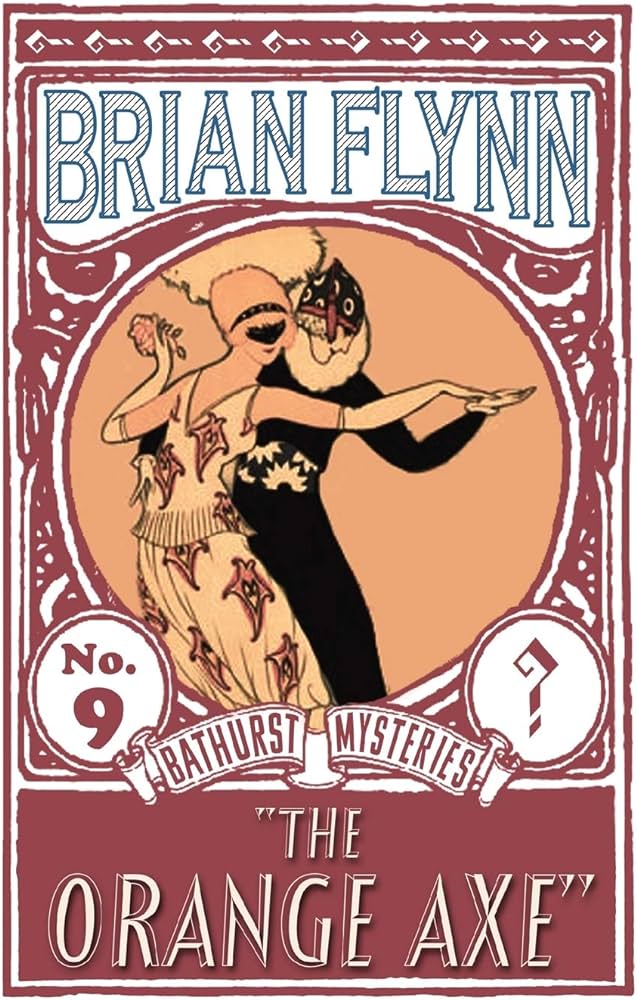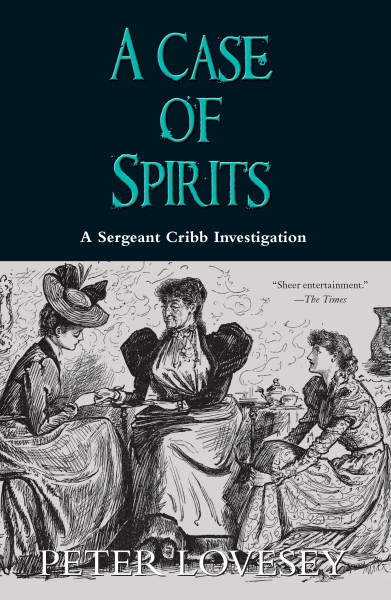
This collection was originally published in 1893. It contains stories published in The Strand between 1892 and 1893.
Sherlock Holmes #4
Preceded by The Adventures of Sherlock Holmes
Followed by The Hound of the Baskervilles
In The Memoirs of Sherlock Holmes, the consulting detective’s notoriety as the arch-despoiler of the schemes concocted by the criminal underworld at last gets the better of him.
Though Holmes and his faithful sidekick Dr Watson solve what will become some of their most bizarre and extraordinary cases – the disappearance of the race horse Silver Blaze, the horrific circumstances of the Greek Interpreter and the curious mystery of the Musgrave Ritual among them – a criminal mastermind is plotting the downfall of the great detective.
Half-devil, half-genius, Professor Moriarty leads Holmes and Watson on a grisly cat-and-mouse chase through London and across Europe, culminating in a frightful struggle which will turn the legendary Reichenbach Falls into a water double-grave . . .
Note: some editions, including the first, exclude The Adventure of the Cardboard Box. If purchasing separately make sure that the story is either in your copy of Memoirs or His Last Bow if you wish to collect the whole Holmes canon.
Today I continue my series of posts in which I revisit stories from the classic Holmes canon. This time it is the turn of The Memoirs of Sherlock Holmes – a volume that contains several of Holmes’ most famous cases.
The Adventure of Silver Blaze remains one of the most iconic Holmes short stories which I think reflects its relative simplicity. It is a good story with a simple but cunning solution.
The Final Problem is similarly quite superbly atmospheric and contains some thrilling action moments. Not to mention it introduces us to Moriarty – one of the most significant characters in the Holmes canon.
Not every story thread proves successful. Stories like The Adventure of the Cardboard Box feel rather silly and some repeat themes and ideas. Still, even when Conan Doyle’s plotting fails to thrill, he is always highly readable and gives us some truly great moments here.
The Verdict: Though the stories may not be as famous as those in The Adventures of Sherlock Holmes, there are several that struck me as among Conan Doyle’s best.
Story by story notes follow after the break.
Story-by-Story Notes
The Adventure of Silver Blaze
Holmes investigates the disappearance of a famous race horse from its stables on the eve of a major race.
I doubt I am alone in considering this one of the best Holmes short stories. It is certainly one of the most famous with a highly successful mystery novel (and stage play) taking its title from a key line.
The story showcases Holmes’ methods and, in particular, the idea that a simple observation can often be the key to solving a case. I also appreciate that this story throws us straight into the investigation, making the piece feel pacier than some of the stories in the previous collection, and that the case focuses on the question of how more than the who.
It was one of the first Holmes stories I read and that solution is quite unforgettable.
The Adventure of the Cardboard Box
Holmes becomes intrigued by an article in the newspaper about a woman receiving a box in the mail with two severed human ears in it packed in salt.
I was rather surprised to find that I had no memory of this story either in print or in one of its adaptations. No memories came back to me while reading it either so I can only assume that either I found the story dull or its content went over my adolescent head.
The most positive aspect of this case is that the chain of assumptions made by Holmes makes sense and seeming quite clear and logical. That being said, I find the final explanation of the crime to be rather too wild to take at all seriously. For me the best Holmes cases start fantastical and are brought back to a very simple idea (such as The Red-Headed League) – instead this ends up feeling every bit as crazy as it begins.
The Adventure of the Yellow Face
This adventure begins with a note from Watson emphasizing that this is one of the few cases Holmes could not solve that he learned the solution to. With that tantalizing lead-in, we are then introduced to Mr. Grant Munro – a man who has come to consult Holmes about his wife’s strange behavior since a cottage near them was occupied.
There are several aspects of this story that are noteworthy though unfortunately a few can’t be discussed without spoiling its solution.
Let’s deal with those that can. This is another one of those cases where Holmes is not commissioned to investigate a crime but rather to explain something that just feels odd. The result is a story that feels surprisingly personal and rooted in an exploration of emotion. This is unusual for Holmes but I think it works, particularly given the introduction that is given for the story.
With regards Holmes’ error, I think the idea he comes to seems reasonable given the relatively limited facts he is working with. He is wrong but his reasoning is not unsound – it is more that he incorrectly applies it.
This then brings us to the most significant issue I have with the story as a Holmes adventure: Holmes is largely passive and contributes little to its resolution. If you remove his consultation from the narrative, I see little reason to think that the outcome would not have been exactly the same. It may even have benefitted from showing us Munro’s actions and letting us experience them from his perspective rather than using the technique of recounting previous events.
Overall then I would say this is a more interesting piece of fiction than it is a Holmes adventure. Still, I think its discussion of this spoilery topic are much more interesting and complicated than you might expect and I think the ending has an emotional charge to it I am not used to experiencing in Conan Doyle’s work (not that he doesn’t try for those moments elsewhere – just I am usually unaffected by them).
The Adventure of the Stockbroker’s Clerk
A clerk consults Holmes about his unease about a very well paid position he has accepted.
The scenario here is reminiscent of another early adventure in several respects and unfortunately that comparison is not a favorable one. The biggest issue for me is that, once again, while Holmes does work out what happened his involvement has no bearing on the outcome of the story. Overall, it is quite readable but a pale imitation of an earlier and more imaginative tale.
The Adventure of the Gloria Scott
Holmes receives a telegram from his only university friend, Victor Trevor, asking for his help. The friend’s father suffered a stroke as a result of fright after reading a seemingly innocuous message and Victor wants Holmes’ advice.
This story is a notable entry in the Holmes canon in several ways. For one thing it is set at the start of Holmes’ career as a detective. For another, it is almost entirely recounted by Holmes himself through a short framing mechanism in which Watson explains how he heard of the adventure.
Unfortunately I do not rate this as one of Holmes’ more interesting cases, in part because he plays a rather incidental role in the story. While he does make a few observations early in the story about Victor’s father and does solve a coded message, the truth is revealed by a third party and that would have been shared with Victor regardless of Holmes’ presence. This renders Holmes strangely passive in the story and means there is little detection to be found here.
The Adventure of the Musgrave Ritual
Holmes recounts a strange case brought to his attention by an old university acquaintance who consulted him after the disappearance of two of his servants.
The case revolves around a titular family ritual that the butler had been caught reading shortly before his disappearance. Holmes has to work out the significance of the ritual before he can figure out why they were interested and where they have disappeared to.
The story is fine enough as it goes and I think the basic idea behind it is pretty clever. The problem for me was that I didn’t find the characters all that interesting or the puzzle the sort the reader can play along with.
The Adventure of the Reigate Squire
Watson takes Holmes to a former patient’s home to recuperate. While there they learn of the thefts of several personal items from a neighbor’s estate and then, the following day, of the murder of a coachman.
A pretty interesting story that is boosted by the interesting dynamics between the recuperating Holmes and Watson whose help he needs to rely on here. The case itself is not particularly complex but it is well told.
The Adventure of the Crooked Man
Holmes asks Watson to join him for the final stages of his investigation into the sudden death of a Colonel Barclay. He was found dead and his wife is believed to have been involved.
This is one of those stories I remembered very strongly yet on revisiting it I am not sure why it stood out so much for me. I suspect it is some of the imagery that lingers for me but the actual mystery itself is a little underwhelming, particularly given that the legal issue resolves itself largely without Holmes’ efforts. In some respects, it’s quite a good story – it just doesn’t grab me as a case.
The Adventure of the Resident Patient
Holmes is consulted by a doctor specializing in nervous conditions concerning strange events that have affected the nerves of his business partner and patient.
This case is another that I had strong memories of prior to revisiting it, thanks in part to the highly atmospheric Jeremy Brett television adaptation. The short story doesn’t quite have that same atmosphere though and the several key points of the case are unguessable. As an adventure though it’s pretty good, particularly given the active role Holmes plays in performing the investigation himself.
The Adventure of the Greek Interpreter
The story that introduces us to Mycroft, Holmes’ older brother. During a meeting with him at the Diogenes Club, Holmes is introduced to Mr. Melas, a Greek interpreter who tells him how he was kidnapped. He is taken to a house were he meets a man whose face is wrapped in plaster with bandages on his mouth and he is instructed to ask the man questions in Greek. After being returned home safely, Melas tells Mycroft of the strange incident.
Though the case is certainly quite strange and intriguing, the most appealing aspect of it is, for me, the exploration of Holmes’ relationship with Mycroft and the comparison of their skills. This is interesting and goes some way to making Holmes a little less superhuman and a little more relatable.
The Adventure of the Naval Treaty
Watson is contacted by an old school friend who asks for Holmes’ assistance with a matter he will not describe in a letter. When they arrive they are told that the matter concerns a treaty between England and Italy that the French and Russians are keen to find out about. The friend had been entrusted with the task of copying the document but when it disappears from his office he fears what might happen.
I like this story a lot although I am aware it shares some common thread with a story in the previous Holmes collection. I enjoyed the international dimensions of the story and felt that this did a good job of elevating the stakes beyond the personal.
The Final Problem
Ah! The Final Problem. This story is one of the most memorable in the Holmes canon in part because of its introduction of Moriarty, a character who casts a huge shadow even though his actual involvement in the series of Holmes stories is quite minimal.
There is, of course, another reason that this story is a historic one for Holmes…
The adventure elements are present and quite trilling while I think Conan Doyle does a superb job of setting up Moriarty. There is a lot of discussion about him as a Napoleon of crime and describing the scope of his operations, making it clear that he is a true adversary for Holmes.
This story was intended to be the last word on the Great Detective by an author who had tired of his creation.
Thankfully he would be persuaded to eventually write for Holmes again. But the consequences of that will be a story for another day…




Leave a comment